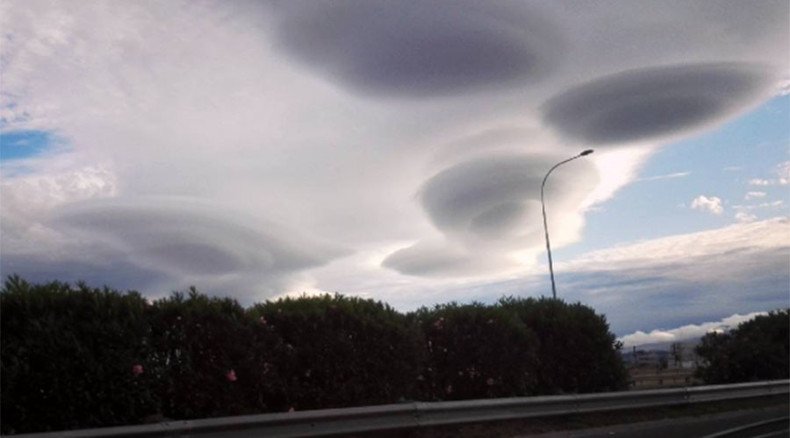Mesmerizing cloudscape over Cape Town resembles alien invasion (PHOTOS)

They’re not space invaders bent on conquering earth, but a weird phenomenon whipped up by Mother Nature - probably to keep us alert. Lenticular clouds over South Africa provided the kind of show that could easily be mistaken for an alien invasion.
Looking like a scene from ‘Independence Day’, this beautiful invasion is sure to take the breath away, as it did for Cape Town residents on Sunday. Few knew those were actually lenticular clouds – wonders of nature who owe their name to their shape – a lens-like protrusion.
They’re usually formed by air flowing over mountains. According to EarthSky, “a series of large-scale standing waves may form on the mountain’s downwind side. If the temperature at the crest of the wave drops to the dew point, moisture in the air may condense to form lenticular clouds. As the moist air moves back down into the trough of the wave, the cloud may evaporate back into vapor. So lenticular can appear and disappear relatively quickly."
But they’re not exclusive to mountains – all it takes are the right meteorological conditions, chief among them the presence of “sheer winds created by a front.”
And “for all of these reasons, lenticular clouds are often mistaken for UFOs.”
The particular clouds on display here have a standing shape, also known as the stratocumulus standing lenticular cloud.












